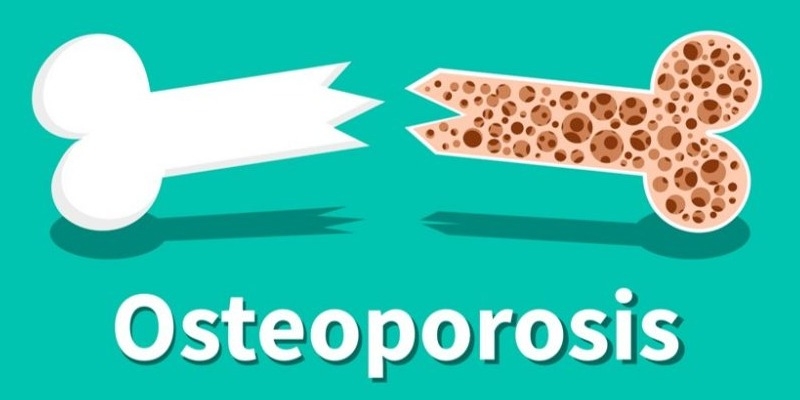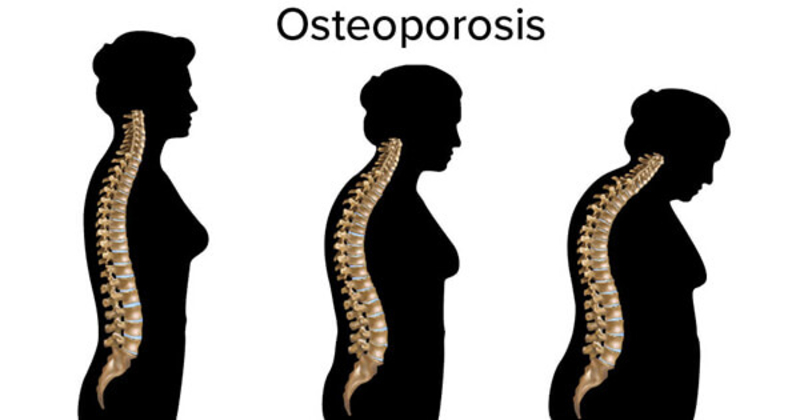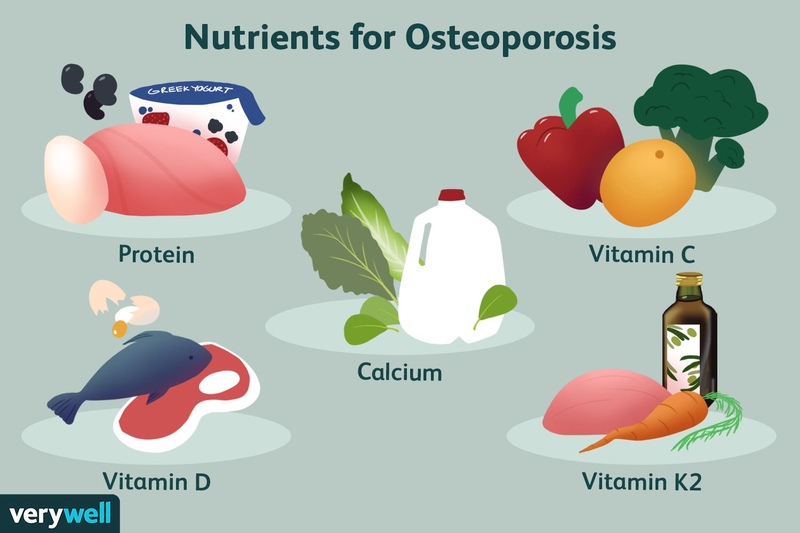Osteoporosis is a condition that impacts bone density and strength significantly. It can make life hard, as it hinders your regular movements. However, you must adopt a nuanced approach. This includes understanding its multifaceted causes, recognizing symptoms, and implementing an appropriate diet. You should also be aware of the correct treatment methods, so with guidance from healthcare professionals, you can get ahead of this unfortunate health condition, before it gets worse.

Osteoporosis Causes
Various factors influence osteoporosis, a condition characterized by weakened bones. To effectively prevent and manage it, you must understand its causes.
Hormonal Factors
Particularly during menopause in women, hormonal imbalances significantly contribute to osteoporosis. The hormone crucial for maintaining bone density, estrogen, may experience a decline in levels that accelerates bone loss. Pivotal recognition of the impact of estrogen deficiency is necessary when addressing the hormonal aspects of osteoporosis.
Genetics and Family History
Individuals' predisposition to osteoporosis crucially depends on genetic factors and family history. Those with a familial lineage carrying the condition may exhibit higher susceptibility. Acknowledging these genetic predispositions, through proactive measures such as lifestyle adjustments and preventative treatments, can effectively mitigate risks.
This underscores the importance of personalized healthcare in managing complex diseases like osteoporosis. In the overall management of osteoporosis, genetic counseling and early intervention strategies emerge as crucial components.
Nutritional Deficiencies
Certain nutrients, specifically calcium and vitamin D, commonly cause osteoporosis due to inadequate intake. Calcium serves as a pivotal building block for bones. Its absorption is facilitated by Vitamin D. The article will explore the crucial role of these two elements in sustaining optimal bone health. This thesis will outline the dietary sources of individuals, and provide practical strategies to ensure optimal intake, educating people about nutrition's role in preventing osteoporosis is not just important, it becomes imperative for fostering healthier bones at a graduate level.
Osteoporosis Symptoms
Often, osteoporosis remains asymptomatic until the occurrence of fractures. Therefore, early intervention and management hinge on recognizing the subtle signs and symptoms.
1. Bone Pain and Tenderness
Persistent bone pain or tenderness, particularly in the spine or lower back, may afflict individuals with osteoporosis. From a dull ache to more intense pain, it impacts daily activities with discomfort.
2. Height Loss Over Time
Fractures in the spine related to osteoporosis can precipitate a gradual loss of height over an extended period. Often overlooked, this symptom can indicate vertebral compression fractures.
3. Stooped Posture
Vertebral fractures potentially yield a posture characterized by stooping or hunching, which is clinically referred to as kyphosis. A visible indicator of bone density loss manifests as a change in spinal alignment.
4. Frequent Fractures
Even minor trauma or falls significantly heighten the risk of fractures in individuals with osteoporosis. The hip, spine, and wrists commonly experience fractures.
5. Decreased Grip Strength
Osteoporosis is a condition characterized by weakened bones and muscles and has a direct impact on grip strength. Opening jars may pose a challenge for individuals who notice difficulty in tasks requiring hand strength.
6. Receding Gums and Tooth Loss
Osteoporosis may correlate with dental issues such as receding gums and tooth loss. These oral health concerns can significantly contribute to the weakening of the jawbone.
7. Change in Posture and Body Shape
Fractures related to osteoporosis have the potential to modify body posture and shape: these alterations may manifest as a protruding abdomen, or even shift the individual's center of gravity.

8. Difficulty in Standing and Walking
Difficulties in standing and walking may result from severe osteoporosis; instability and an escalated fall risk are also potential experiences for individuals with this condition.
9. Limited Range of Motion
A limited range of motion in joints may result from decreased bone density, potentially impacting mobility and overall flexibility.
10. Fatigue and General Weakness
Overall fatigue and weakness may result from osteoporosis. It’s a condition often marked by the body's escalated efforts to combat bone loss.
Osteoporosis Treatment
A multifaceted approach to osteoporosis treatment combines medical interventions with lifestyle modifications. This strategy effectively manages and mitigates the impact of the condition.
Medical Interventions
Healthcare professionals might recommend bisphosphonates, a specific class of drugs. These prescription medications fundamentally underpin the treatment of osteoporosis. Their function is to prevent bone loss and fortify weakened bones. Hormone-related therapies, especially in postmenopausal women, are directed toward mitigating hormonal imbalances that instigate reductions in density within skeletal structures. Bone-building medications, furthermore, pivotally promote the regeneration of bone tissue.
Tailoring the treatment plan to individual needs requires essential regular consultations with healthcare professionals. The effectiveness of medications might vary. Factors such as age, overall health, and potential side effects may necessitate adjustments. Ongoing monitoring to ensure alignment of chosen interventions with patient's health goals and optimize outcomes is crucially important.
Lifestyle Changes
Lifestyle modifications, beyond pharmaceutical interventions, crucially enhance the efficacy of osteoporosis treatment.
Weight-Bearing Exercises
To improve bone density, it is paramount to incorporate weight-bearing exercises into your daily routine. Walking, resistance training, and weightlifting all exert stress on the bones. This stimulation over time makes them denser and stronger.
Dietary Considerations
Supporting bone health fundamentally requires sufficient intake of calcium and vitamin D. Dietary sources are abundant in these nutrients. These include dairy products, leafy greens, and fortified foods. It also emphasizes the significance of striking an equilibrium between sun exposure, a natural source of Vitamin D, and skin protection for overall well-being.

Other Lifestyle Factors
Lifestyle factors, specifically smoking and excessive alcohol consumption, affect bone health. These habits can promote bone loss and weaken bones, thereby impeding treatment efficacy.
By providing insights into the criticality of adopting a healthy lifestyle in tandem with medical interventions. This article aims to enhance our understanding of the significance of proactive self-care strategies.
Essentially, a comprehensive and tailored approach to osteoporosis treatment combines medical interventions with lifestyle adjustments. Addressing the condition from multiple angles empowers individuals to actively manage their bone health and enhance their overall quality of life.
Osteoporosis Diet
Calcium-Rich Foods
Explore a list of calcium-rich foods such as dairy products, leafy greens, and fortified options to maintain strong bones with a well-balanced diet that's rich in calcium.
Vitamin D Sources
Essential for calcium absorption, Vitamin D can be derived from natural sources like sunlight exposure, fatty fish consumption, such as salmon, tuna, or mackerel, and fortified foods. Explore these alternatives and master the art of incorporating them into your diet for optimal health benefits.
Anti-Inflammatory Foods
Anti-inflammatory foods, like fruits, vegetables, and omega-3 fatty acids, play a vital role in promoting bone health. They mitigate the potential exacerbation of bone loss caused by inflammation.
The bottom line is that by comprehensively exploring osteoporosis, you now know the factors, treatment options, and dietary considerations for this health condition. Understanding the intricate aspects of osteoporosis enables individuals to manage their bone health proactively, thus reducing fracture risks.




